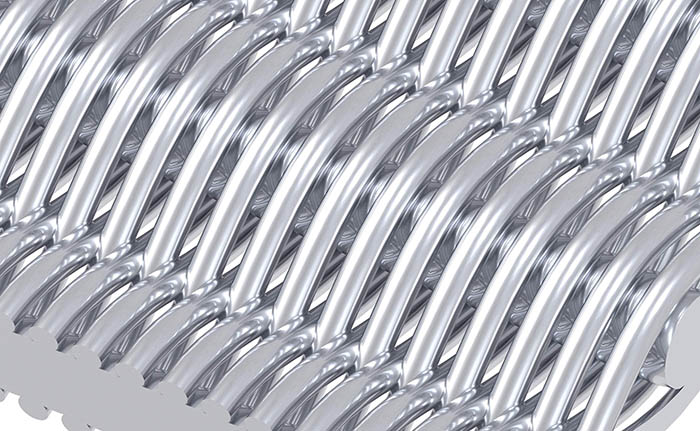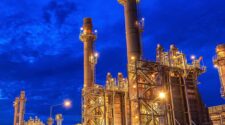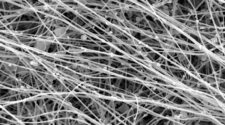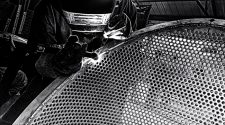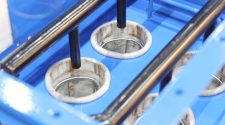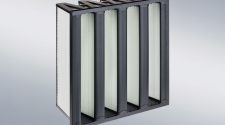Where are hot gas filters needed?
Polyester and other lower cost filter media have temperature limitations. More expensive options are needed to capture dust emitted from dryers, kilns, furnaces and combustors. The higher the temperature, corrosion and abrasion potential, the higher the cost of capture. Certain combinations match well with properties of a media and others do not. Nomex, for example, is very successful in asphalt dryer applications, but not for coal fired boilers. The McIlvaine Company conducted a two hour webinar at an AFS conference to discuss hot gas filter options based. This analysis provides a starting point for suppliers to make a case as to why their product has the lowest total cost of ownership for a specific application. This presentation can be found at http://bit.ly/HotGasFiltGdPS (case sensitive URL).
What are the specific applications?
The true cost analysis needs to be as site specific as possible. In fact, it can be created in tiers with a top tier being a process, such as fuel combustion, and then segmented by specific industry, and then by specific fuel. Ultimately, a customized version needs to be presented to accurately represent the true cost of a given filtration technology.
Most of the hot gas filter market is concentrated in eight major industries. In some industries, such as cement, there is a sizable low temperature market as well. In others, such as incineration (waste to energy), there is little low temperature filtration. The chemical industry is a large filter purchaser, but a relatively small percentage is hot gas.
| World Hot Gas Filter Market 2019 | |
| Industry | % |
| Asphalt Chemical Food, Pharma Incinerators Metals Mining Other Industries Power Pulp & Paper Steel Cement Aggregate |
6 3 2 6 7 6 7 6 5 21 2 16 18 8 |
The flow of hot gas through coal-fired boilers exceeds the flow through all other sources combined. However, electrostatic precipitators have been the choice for more than 90 percent of the plants. This is starting to change due to stricter emission limitations and the development of the catalytic filter and dry sorbent injection (see slide 75 of the presentation noted above).
“The true cost analysis needs to be as site specific as possible. In fact, it can be created in tiers with a top tier being a process, such as fuel combustion, and then segmented by specific industry, and then by specific fuel. Ultimately, a customized version needs to be presented to accurately represent the true cost of a given filtration technology.”
The aggregate segment is expanding at more than 5 percent per year due to the construction of manufactured sand plants supplying proppant for hydraulic fracturing.
Fiber type
An important option is fiber type. As shown on slides 42, 51 and 53, there are a number of fibers with differing abilities to withstand higher temperatures, acidity, hydrolysis, alkalis and oxidation. There are also fiber blends (slide 43). Fiber shape can be important (slide 41).
Media
Membranes are used in conjunction with other media to improve efficiency and cake release while reducing dust accumulation within the media interstices. Woven fiberglass is a common option with shrinking market share. Nonwovens are gaining marketshare as well. In part, this is due to the advent of pulse jet cleaning. The specific decision is based on cost and performance (slides 37, 40). Finishing and treatment enhances dust release and life (slide 44). Dust capture varies with membrane design (slide 45). Meanwhile, depth filtration vs surface filtration is analyzed in slides 46-50.
Elements
Element configuration is a function of the filter design, including cleaning mechanism. Initial bag costs can vary by as much as a ten times multiple depending on design (tubular vs pleated), weight, and type of fiber (slides 52-63).
A significant application of hot gas filtration is in the replacement of one field of a precipitator with bags. This may require the pleated design due to space constraints (slides 64-68). Ceramic and metal filters are also gaining marketshare for hot gas applications (slides 74-79).
Claiming and validating the lowest true cost
True cost claims can be generalized based on similar conditions. The ideal validation is a specific case analysis for an application that varies little from plant to plant. Even this extrapolation can be tricky. In an era when coal blending is common, not only will plants be different, but the conditions at any one plant can vary. With coal being the backup power source for wind and solar many coal plants are cycling with unintended consequences for bag life.
In waste to energy, cement solid fuel combustion and a number of other applications, the type of acid gas removal equipment also becomes a factor. Mercury and SO3 capture can also be accomplished in the bag filter, causing further variables in cost of ownership.
Criteria for true cost differential
A claim of lower true cost depends in part on use of factors such as cost of labor and electricity. These differ considerably from country to country. Part of the true cost initiative is to gain acceptance for one set of factors. Some factors, such as remaining plant life, are very site specific.
Three important true cost factors for a specific product include
- Physical parameters
- Intelligence
- Guidance
The physical parameters include materials and shape, but also aspects of movement (e.g., bags during cleaning phase). The product intelligence parameter is exemplified by the latest 3M furnace filter, which is equipped with a bluetooth-enabled pressure sensor that alerts the owner as to when a filter change is needed. And the guidance parameter in the case of the 3M furnace filter would be a cloud connection, which automatically ships a new filter when needed.
It is now possible for an element supplier to monitor bag health continuously. Developments in wireless technology, data analytics and cloud-based process management open up new opportunities for lower true cost. In China this opportunity is further enhanced by government support of third-party operation of air pollution systems. The basis of this support is the goal of minimizing emissions. The third party operator has a great incentive to use the lowest true cost products.
Ultimately, the decision maker for a specific plant needs to be convinced of the true cost of the offering. As in the case of a criminal prosecution, there is usually no “smoking gun.” The prosecutor has to carefully assemble all the evidence. He also may want to enlist subject matter experts to testify. The True Cost initiative undertaken by IFN and McIlvaine is akin to a continuous jury trial.


